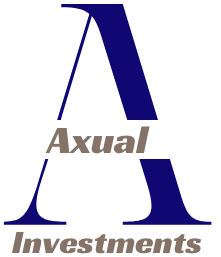Retirees and investors nearing retirement face unique challenges when it comes to investing their hard-earned savings. In today’s ever-changing financial landscape, finding the best investment strategy for retirees is crucial to secure a comfortable and stable financial future. By considering a retirement investment plan that takes into account various retirement investment options, retirees can develop a retirement portfolio strategy that prioritizes secure investments and aligns with their financial goals.
Key Takeaways:
- Retirees should aim for a balanced mix of low-risk investments that provide steady income and preserve capital.
- Adjusting asset allocation to a 60%-to-40% split between stocks and defensive investment vehicles is advisable as retirement approaches.
- Secure investments for retirees include bonds, certificates of deposit (CDs), dividend-paying stocks, preferred shares, high-yield savings accounts, and annuities.
- Bonds offer consistent income and portfolio protection, making them a conservative investment option for retirees.
- Certificates of deposit provide security, fixed interest rates, and an estate planning benefit for retirees.
As retirees navigate the complexities of the investment landscape, it is important to consider the best investment strategy that suits their needs, risk tolerance, and financial goals. By diversifying their retirement fund allocation and regularly reviewing their portfolio, retirees can mitigate risk and ensure a stable financial future in retirement. Exploring secure investments and retirement investment options is the key to success on this journey.
Bonds: A Conservative Investment for Retirement
Bonds have long been regarded as a secure and conservative investment option for retirees. They offer a variety of benefits, including consistent income and portfolio protection. For retirees who prioritize capital preservation and a reliable source of income, bonds can be an attractive choice.
Retirees often turn to bonds to supplement their retirement income from other sources such as Social Security, pensions, and retirement accounts. Bonds provide a predictable stream of income, making it easier to plan for expenses in retirement. They can help retirees maintain a stable lifestyle and meet their financial obligations.
| Type of Bond | Risk Level | Advantages |
|---|---|---|
| Treasury Bonds | Low | Backed by the U.S. government, low default risk |
| Corporate Bonds | Medium | Potential for higher yields, diversification |
| Municipal Bonds | Low to medium | Tax advantages, support local projects |

When considering bonds for retirement, retirees should assess their risk tolerance and tax situation to determine the most suitable bond types. Treasury bonds are backed by the U.S. government and have the lowest default risk, making them an appealing option for risk-averse retirees. Corporate bonds offer the potential for higher yields but come with a slightly higher level of risk. Municipal bonds provide tax advantages and allow retirees to support local infrastructure and community projects.
Overall, bonds can play a crucial role in a retiree’s investment portfolio, offering stability, consistent income, and capital preservation. By including bonds as part of their retirement investment strategy, retirees can secure a reliable source of income while protecting their portfolio against market volatility.
Certificates of Deposit (CDs): Secure Savings Option for Retirees
When it comes to retirement savings, finding low-risk investment strategies is a top priority for many retirees. One such option that offers both security and a fixed interest rate is a certificate of deposit (CD). CDs have long been favored by retirees due to their reliability and the peace of mind they provide.
CDs work by depositing a certain amount of money with a bank or financial institution for a specific period of time, typically ranging from a few months to several years. In return, the investor receives a fixed interest rate that is guaranteed for the duration of the CD. This means that retirees can enjoy a predictable and steady stream of income from their investment.
One of the key advantages of CDs is their low-risk nature. Unlike stocks or other investments tied to market fluctuations, the value of a CD remains stable and is not subject to market volatility. Additionally, CDs are typically insured by the U.S. Federal Deposit Insurance Corporation (FDIC) up to $250,000 per depositor, providing an extra layer of protection for retirees’ savings.
| Benefits of Certificates of Deposit for Retirees |
|---|
| Security: CDs offer a secure investment option with a fixed interest rate. |
| Steady Income: Retirees can rely on regular interest payments from their CDs. |
| Low Risk: CDs provide stability and are not subject to market fluctuations. |
| Estate Planning Benefit: CDs offer an estate planning benefit called a “death put,” providing flexibility for heirs in the event of the investor’s death. |
For retirees looking for a low-risk investment to add to their retirement savings plan, certificates of deposit can be an attractive choice. The combination of security, steady income, and the estate planning benefit make CDs a valuable addition to a retiree’s portfolio. It’s important to consider the duration of the CD and shop around for the best interest rates to maximize returns.

Dividend-Paying Stocks: Stable Income for Retirees
When it comes to building a retirement portfolio, retirees often seek investments that provide a stable income while balancing the need for growth. Dividend-paying stocks can be a valuable addition to such a strategy, offering the potential for regular income payments and the stability associated with blue-chip companies.
Dividends have historically played a significant role in the total return of the S&P 500, making dividend-paying stocks an attractive option for retirees seeking income. These stocks, typically associated with well-established companies, distribute a portion of their earnings to shareholders in the form of dividends. By investing in dividend-paying stocks, retirees can potentially enjoy regular income payments on top of any potential capital appreciation.
One of the advantages of dividend-paying stocks is their ability to provide a buffer against market volatility. While stock prices may fluctuate, the dividends received from these stocks can help to offset any potential losses and provide a consistent income stream. Additionally, many blue-chip companies have a track record of consistently increasing their dividends over time, which can help retirees maintain their purchasing power in the face of inflation.
Dividend-Paying Stocks: A Case Study
“Investing in dividend-paying stocks has been a cornerstone of my retirement strategy,” says John Smith, a retired investor. “I appreciate the steady income these stocks provide, and I also benefit from the potential for long-term growth. It’s a win-win for my retirement portfolio.”
When considering dividend-paying stocks for a retirement portfolio, it’s important to assess the company’s track record, financial stability, and dividend growth history. Investors should focus on companies with a history of consistent dividend payments and those that have the potential for future dividend increases.
In summary, dividend-paying stocks can offer retirees a stable income stream while providing exposure to potential growth. By carefully selecting blue-chip companies with a strong dividend history, retirees can build a retirement portfolio that balances income and growth, helping to ensure a secure financial future.
Conclusion
In conclusion, the best investment strategy for retirees in 2024 is a well-balanced approach that considers both risk and reward. It is important for retirees to allocate their retirement funds wisely to ensure long-term financial stability. By diversifying their portfolio, retirees can minimize risk and maximize potential returns.
Retirees should prioritize capital preservation and consistent income by reallocating their portfolio to include a mix of low-risk investments such as bonds, certificates of deposit (CDs), and dividend-paying stocks. This blend of investment vehicles allows retirees to protect their capital while still generating income for their retirement years.
Furthermore, regular review of investment allocations is essential to adapt to market conditions and make necessary adjustments. Retirement is a long-term endeavor, and retirees need to stay informed and proactive to ensure their financial future remains secure.
By considering the best investment strategy for retirees, focusing on retirement fund allocation, portfolio diversification, and risk reallocation, retirees can navigate the financial landscape with confidence and enjoy a fulfilling retirement.

FAQ
What is the best investment strategy for retirees in 2024?
The best investment strategy for retirees in 2024 involves a combination of low-risk investments that prioritize capital preservation and consistent income. Retirees should consider reallocating their portfolio to include a balanced mix of stocks, bonds, and other investment vehicles that align with their risk tolerance and financial goals.
Why are bonds considered a conservative investment for retirement?
Bonds are considered a conservative investment for retirement due to their conservative nature and propensity to provide consistent income and portfolio protection. Wealth managers often recommend bonds for senior clients as they can augment other retirement income sources and provide stability in the face of market volatility.
What are certificates of deposit (CDs) and how can they benefit retirees?
Certificates of deposit offer security and a fixed interest rate over a specific period of time, making them attractive for retirees. CD rates have been on the upswing, providing historically high returns. CDs are protected by the U.S. Federal Deposit Insurance Corp. up to $250,000, making them a safe starting point for retirement savings. They also offer an estate planning benefit called a “death put,” providing flexibility for heirs in the event of the investor’s death.
How can dividend-paying stocks be a source of stable income for retirees?
Dividend-paying stocks can be a source of stable income for retirees while offering some level of risk exposure. These stocks, often associated with blue-chip companies, provide a steady stream of income payments and can help insulate against stock market volatility. Retirees can consider including dividend stocks in their portfolio to balance income and growth potential.
Why is portfolio diversification important for retirees?
Portfolio diversification is important for retirees to protect against market volatility and ensure a stable financial future in retirement. By diversifying their investments across different asset classes, such as stocks, bonds, and other investment vehicles, retirees can mitigate risk and potentially maximize returns.

